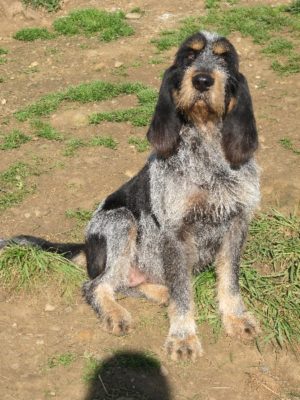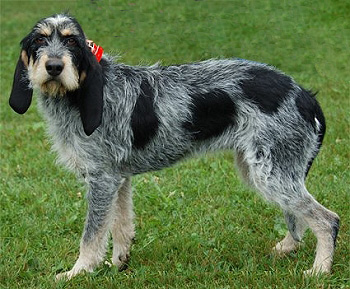Griffon Bleu de Gascogne
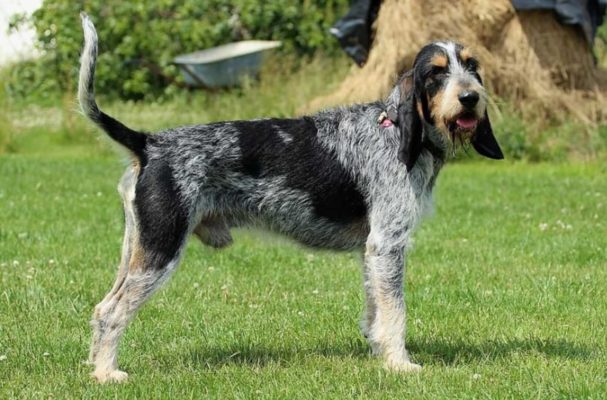
The Griffon Bleu de Gascogne is a companion dog with a gentle and docile personality. Representatives of this breed need prolonged exercise and a wide space to live comfortably. The pet is obedient, energetic, fussy, and very sociable.
Table of Contents
Breed Information
| Another Name | – |
| Origin | France |
| Height | Males 50-56 cm Females 46-55 cm |
| Weight | 16-24 kg |
| Fur | Long |
| Color | Gray-blue |
| Lifespan | 10-12 years |
| FCI Classification | Scent hounds and related breeds |
| Group | Hunting dogs, dogs for children |
| Price | $1000-1300 |
Breed Photos
Origin History
The Griffon Bleu de Gascogne results from a cross between the Lesser Blue Gascon and the Hard Coat Griffon. The first place of appearance of representatives of this breed is the southern region of the Pyrenees. It is believed that French Griffons were also involved in the emergence of this type of dog.
Representatives of this breed are particularly friendly to people. For the first time, the Griffon Bleu de Gascogne was bred in the XVIII century. The standard of the breed was approved in the 1970s. Today, these dogs are popular only with dog breeders interested in breeding them.
Appearance
The Griffon Bleu de Gascogne is a dog with a thick coat of medium length. Representatives of the breed have a large skeleton. Athletic build and strong oval paws help the Griffon when hunting big and miniature games. Its head is long, and its ears hang down.
The oval eyes are mostly dark shades, the most common being brown. The dog’s tail is densely covered with hair, set with a saber. The color of Griffon Bleu de Gascogne can be spotted, mostly gray-blue tones. Black spots in the head area are allowed.
Character
The Griffon Bleu de Gascogne is a companion dog with a gentle and docile personality. Representatives of this breed need prolonged exercise and a wide space to live comfortably. The pet is obedient, energetic, fussy, and very sociable.
These dogs get along with children and are very attached to their owners. Prolonged separation from family can easily turn into depression for the pet. The Griffon Bleu de Gascogne is trainable, but patience is required. Due to the fussiness of the breed, representatives of the breed have difficulty concentrating. The pet will get along well in a private home, but it will be cramped in an apartment.
Care
The Griffon Bleu de Gascogne’s thick coat rarely gets dirty but is prone to the formation of tangles. It is necessary to comb the pet at least 1-2 times a week with a special brush. Wipe the dog with a damp towel to prevent unpleasant odor.
Clean your ears regularly, as bacteria and viruses develop in unvaporized moisture. Remove dirt from the mucous membranes of the eyes to prevent infections. Keep an eye on the condition of your claws and trim them if necessary.
Training
The Griffon Bleu de Gascogne is a born hunter. Representatives of this breed need prolonged physical and intellectual activity. Training with the dog is best done in the woods or nature. In natural conditions with a pet, you can train hunting commands.
Training should begin with early socialization. Walk around with other people and animals, so they don’t provoke aggression in your dog. The next step is basic commands. Your puppy should know your voice and respond to it immediately. After that, proceed to the difficult exercises.
During training, keep a calm tone, do not raise your voice in any way. Griffon Bleu de Gascogne can be stubborn, do not use brute force on the dog. Good motivation for obedience is praise in the form of a treat if the command is followed.
Common Diseases
The Griffon Bleu de Gascogne is a dog with a strong immune system. Representatives of the breed are not prone to complex diseases. Possible health problems:
- eye disease;
- osteochondrosis;
- hip dysplasia;
- ear diseases.
To prevent possible problems, keep your dog’s eyes and ears free of accumulated dirt. Keep an eye on your dog’s bones and joints.
Nutrition
The Griffon Bleu de Gascogne needs a balanced diet. Give your dog dairy and fermented foods, cereals, meat, fruits, and vegetables. It should get all the necessary vitamins and minerals. Don’t forget your dog’s water balance; clean drinking is essential for good health.
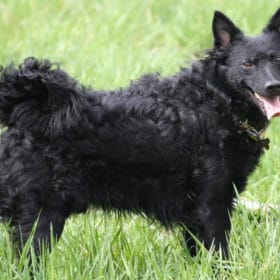 Croatian Sheepdog
Croatian Sheepdog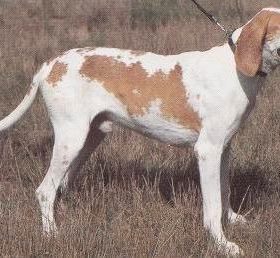 Chien Français Blanc et Orange
Chien Français Blanc et Orange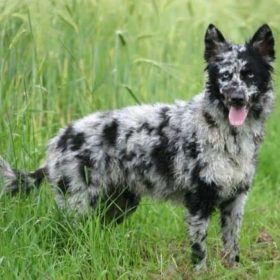 Mudi
Mudi Dandie Dinmont Terrier
Dandie Dinmont Terrier Whippet
Whippet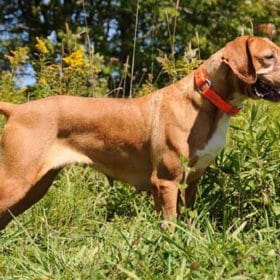 Portuguese Pointer
Portuguese Pointer
